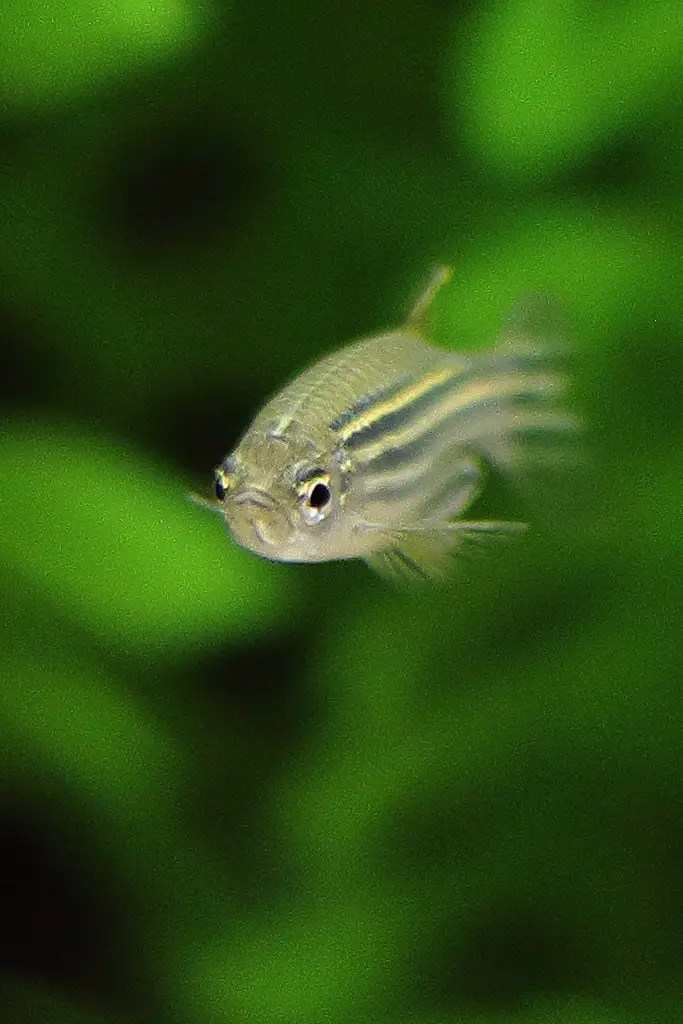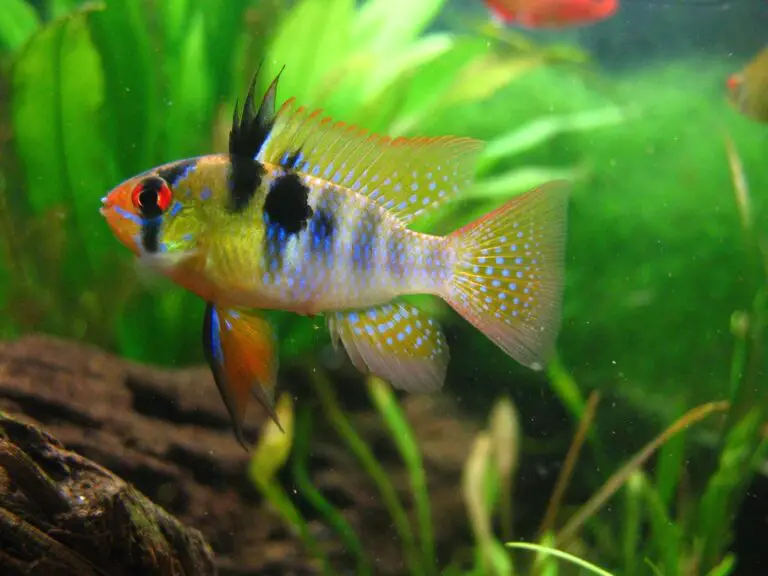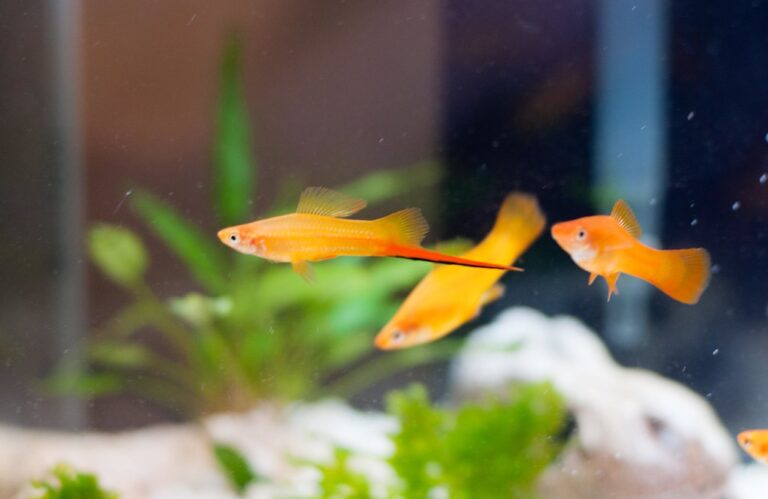Cardinal Tetra Tropical Fish: 1st Ultimate Guide for Aquarium Enthusiasts
Table of Contents
Enter the world of vibrant aquascapes and tranquil underwater realms where the Cardinal Tetra, with its captivating iridescent blue and fiery red stripe, takes center stage. For aquarium enthusiasts and pet fish owners, these tiny terrors of the freshwater depths are more than just ornamental; they embody a harmony of color and grace within the art of aquascaping. This extensive guide will lead you through the cardinal rules of keeping and caring for these tropical gems, from the basics to the nuances that will deepen your appreciation for these mesmerizing creatures.

Understanding Cardinal Tetra: A Splash of Education
The Cardinal Tetra (Paracheirodon axelrodi) is a darling in the world of ornamental fish. Originating from the clearwater blackwater streams of the Amazon basin, these neon wonders have captivated the hearts of hobbyists with their striking beauty and peaceful demeanor. Beyond their aesthetic appeal, their shoaling tendencies make them intriguing to observe as they glide through the water, creating an underwater ballet in your own living room.
Physical Poetry: A Story of Colors
Immersing in the aesthetics of the Cardinal Tetra is akin to witnessing a living painting. Their body shimmers with an electric blue that extends from their nose to the adipose fin, with a sharp, vibrant red line below that. When displayed in a school, their colors create a fluid, almost neon glow. This bioluminescence is a form of communication and cohesion that is as mesmerizing as it is soothing.
Cardinal Habitat: Recreating The Amazon
In the wild, Cardinal Tetras are found in densely vegetated areas of slow-moving waters, often in shadowy environments created by the overlying rainforest canopy. When recreating their natural environment in an aquarium setting, it is vital to emulate this with the right balance of live plants, driftwood, and subdued lighting. The use of botanicals such as Indian almond leaves can mimic their blackwater environment, contributing to the health and happiness of these Amazonian jewels.
Caring for Cardinal Tetra: The Heart of Keeping Healthy Fish
Keeping Cardinal Tetras entails more than just setting up a tank and filling it with water. Understanding their intricate needs and preferences is crucial to maintaining a healthy and thriving community in your aquarium.
Tank Sweet Tank: The Ideal Residence
Cardinal Tetras require a well-maintained, appropriately-sized tank with a capacity of at least 10 gallons for a small group. As jumpers, a good lid is essential to prevent any unexpected leaps out of their habitat. The water should be soft and slightly acidic, with a pH ranging between 5.0–7.0, and a temperature between 73–81°F (23–27°C). Investing in a good filtration system is a must, and regular water changes will ensure a stable and clean aquatic environment.
The Dining Experience: Feeding Tips
Cardinal Tetras are omnivores and will accept a variety of foods in the aquarium. A diet rich in quality flake food, supplemented with live or frozen brine shrimp, daphnia, and bloodworms, will provide the necessary nutrition to maintain their health and vibrant coloration. Remember to feed them in small portions a few times a day to prevent overfeeding and maintain water quality.
Community Courtship: Choosing Tank Mates Wisely
Cardinal Tetras are peaceful fish and will thrive in a community tank with species that share their gentle nature. Avoid keeping them with aggressive or larger fish that may see them as a potential meal. Suitable tank mates include other peaceful species like dwarf cichlids, small rasboras, and other tetra species. The more, the merrier, as a larger shoal can reduce stress and showcase their full spectrum of colors.

Breeding Cardinal Tetra: Unlocking the Miracle of Life
For those aquarists who wish to take their hobby to the next level, breeding Cardinal Tetras can be a rewarding challenge. Witnessing the beginning of life and successfully raising a new generation brings unparalleled joy and satisfaction to any fish-keeping enthusiast.
Love in the Water: Understanding Breeding Behavior
Cardinal Tetras show no sign of sexual dimorphism, making it quite challenging to tell males from females. However, during the breeding season, females may appear slightly rounder as they develop eggs. Breeding condition indicators include a well-established tank with plenty of lush plants under the right water parameters and diet. Spawning usually occurs in the early morning hours, with the female scattering her eggs among the plant leaves. The eggs are adhesive and will stick to the plants until they hatch, usually in about 24 hours.
Raising Fry: Tips for Success
Once the eggs have hatched, fry become free-swimming after a few days. You can offer them infusoria or commercial fry food to sustain them. A separate rearing tank is often set up for the fry to minimize the risk of predation. Maintaining pristine water conditions and a stable environment is crucial for their early development. As they grow, you can transition their diet and gradually introduce them to the main tank.

Navigating Health Issues: The Guide to Well-Being
Even the most meticulous aquarist may encounter health issues with their Cardinal Tetras. Being proactive and observant can greatly improve the chances of preventing and addressing common ailments.
Ailments and Remedies: Common Health Concerns
Cardinal Tetras are resilient fish, but they can be susceptible to ich, or white spot disease, as well as various bacterial and fungal infections. Keeping an eye on their behavior and appearance is key; any signs of stress or unusual swimming patterns can be early indicators of an underlying issue. Quarantining new fish and performing routine health checks on your existing community can help contain and treat any outbreaks efficiently.
The First Response: Treatment Options
At the first sign of trouble, swift action is needed. Isolating the affected fish can prevent the spread of the disease, and a variety of over-the-counter treatments are available to address specific issues. Always follow the instructions on the medication and take care with dosage to avoid harming the fish or compromising the environment. In more severe cases, consulting with a veterinarian specializing in fish health can provide essential guidance.
A Tank of Tales: The Joy of Keeping Cardinal Tetras
The world of aquarium keeping is filled with moments of wonder and delight, and the presence of Cardinal Tetras can make it all the more magical. It’s about more than just seeing fish; it’s about witnessing a thriving, living ecosystem in a glass box. Each tank holds within it a story of life, growth, and the natural beauty of the aquatic world.
Whether you’re a seasoned aquarist or someone taking their first plunge into the hobby, the cardinal tetra can find a place in your heart and the wafting currents of your underwater landscape. Their care and keeping require dedication and understanding, but the rewards are as beautiful as the fish themselves.
In conclusion, the Cardinal Tetra is not just an addition to an aquarium; it is a living gem that enriches the entire environment with its presence. By following the guidelines provided in this comprehensive guide, you can ensure that your aquatic friends live happy, healthy, and colorful lives in the comfort of your home. Engage with the community, share your experiences, and continue to learn and adapt as you deepen your connection with these fascinating creatures. The world beneath the water’s surface is vast and wondrous, and the Cardinal Tetra invites you to explore it.
Are Cardinal Tetras suitable for beginners in the aquarium hobby?
Yes, Cardinal Tetras are generally considered suitable for beginners due to their hardiness and ease of care. However, proper tank setup and maintenance are still essential for their well-being.
How many Cardinal Tetras should I keep together in a tank?
Cardinal Tetras are shoaling fish, so they thrive in groups. It’s recommended to keep them in a school of at least six individuals, though larger groups of 10 or more can create a more natural and visually stunning display.
Can Cardinal Tetras live with other fish species?
Yes, Cardinal Tetras are peaceful and can coexist with a variety of other small, non-aggressive fish species. However, avoid housing them with larger or aggressive fish that may intimidate or prey on them.
What water parameters do Cardinal Tetras prefer?
Cardinal Tetras prefer soft, slightly acidic water with a pH ranging from 5.0 to 7.0 and a temperature between 73–81°F (23–27°C). Maintaining stable water parameters is crucial for their health and well-being.
How often should I feed my Cardinal Tetras?
Feed your Cardinal Tetras small portions of high-quality flake food or pellets multiple times a day. Supplement their diet with live or frozen foods like brine shrimp, daphnia, and bloodworms a few times a week for variety and optimal nutrition.






